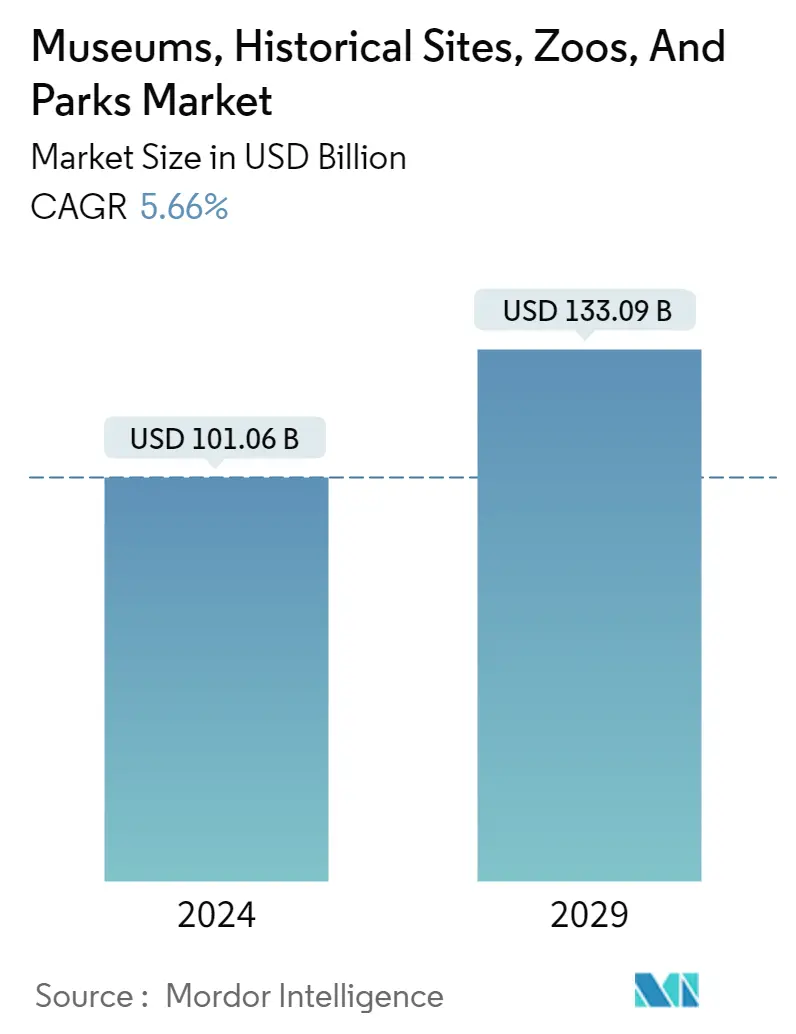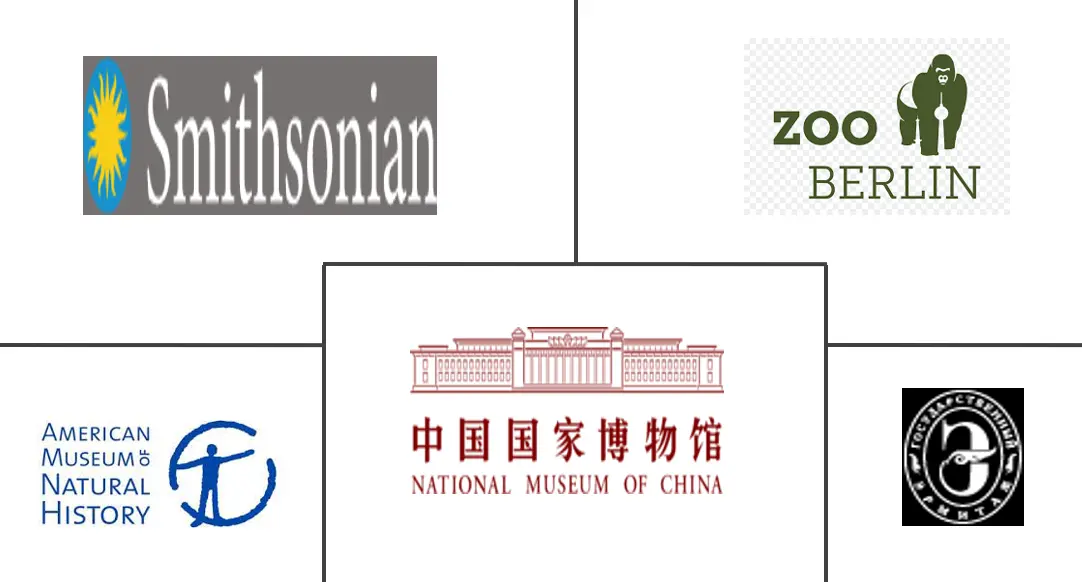Market Size of Museums, Historical Sites, Zoos, And Parks Industry

| Study Period | 2019-2028 |
| Market Size (2023) | USD 95.65 Billion |
| Market Size (2028) | USD 125.96 Billion |
| CAGR (2023 - 2028) | 5.66 % |
| Fastest Growing Market | Europe |
| Largest Market | North America |
Major Players
*Disclaimer: Major Players sorted in no particular order |
Need a report that reflects how COVID-19 has impacted this market and its growth?
Museums, Historical Sites, Zoos, And Parks Market Analysis
The Museums, Historical Sites, Zoos, And Parks Market size is expected to grow from USD 95.65 billion in 2023 to USD 125.96 billion by 2028, at a CAGR of 5.66% during the forecast period (2023-2028).
A museum is a place where a lot of fascinating and priceless goods, like historical artifacts or pieces of art, are stored, researched, and shown to the public. Museums have been established for a variety of reasons, including to serve as leisure centers, academic hubs, or educational resources to improve the quality of life in the communities where they are located to draw tourists to an area, to foster civic pride or nationalistic endeavor or even to blatantly propagate ideological ideas.
An official location where relics of social, political, or military past have been preserved because of their cultural heritage significance is known as a historic site or heritage site. Most historic sites are legally protected, and many of them have the official national historic site designation. Any building, setting, location, or structure that is significant locally, regionally, or nationally qualifies as a historic site. This often means that the location must be at least 50 years old.
A zoo is a place that keeps a collection of wild animals, usually in a park or garden, for research, conservation, or public display, whereas a national park is a designated area set aside by the government for the preservation of the natural environment.
During the COVID-19 pandemic, museums, historical sites, zoos, and national parks, as public gathering places for citizens, faced unprecedented challenges due to limitations in operating their traditional exhibitions and curations as usual. As a result, museums, historical sites, zoos, and national parks made corresponding emergency efforts to accelerate the development of digital resources and service platforms. Such challenges raised numerous potential issues with the applicability of electronic resources, as well as a mismatch between user expectations and its services. Museums, historical sites, zoos, and national parks are trying to meet the moment by turning to digital offerings that allow “visitors” to explore collections online and to help keep some of the excitement of a field trip alive for kids, even if they can't leave the classroom. Over 14 months, the Grammy Museum produced 250 virtual programs.
Post Covid-19, the Museums, Historical Sites, Zoos, And Parks has seen a rise in the number of visitors due to the withdrawal of restrictions by the governments in their countries and globally, which is driving the growth of market. Digitalized Experiences of Museums, Historical Sites, galliers is helping the Market for the growth. Furthermore, the rise in the number of travellers globally is indirectly driving the growth of Market.
